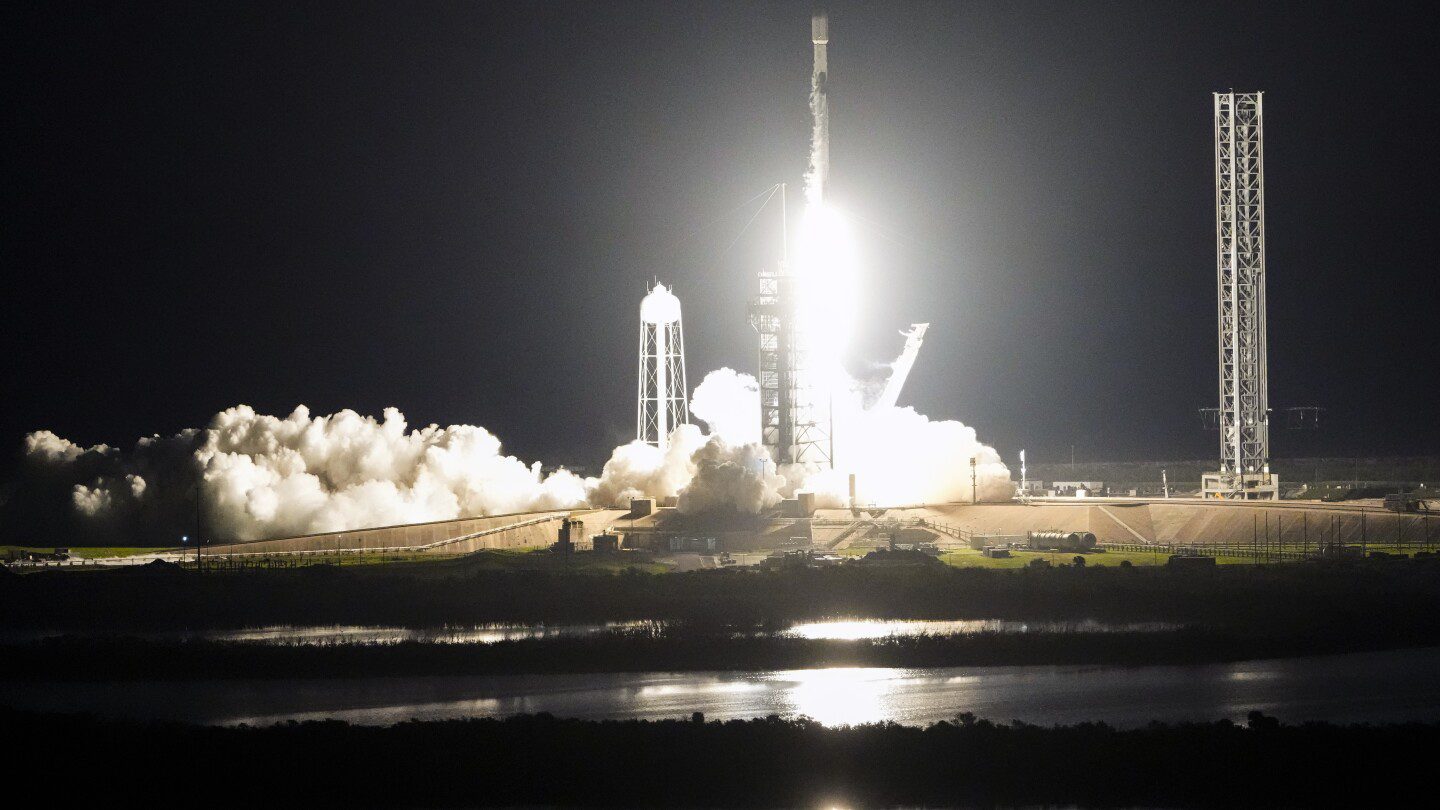
CAPE CANAVERAL, Fla. (AP) — A private company successfully launched a new lunar lander on Wednesday, with the goal of exploring the south pole of the moon. This ambitious mission involves a drone that aims to hop into a perpetually shadowed crater that never receives sunlight.
The lander, named Athena, was propelled into space aboard a SpaceX rocket from NASA’s Kennedy Space Center. It’s on a quick route to the moon, planning a landing on March 6, with hopes of avoiding the setback experienced by its predecessor, which encountered difficulties and toppled upon touchdown.
This launch marks a historic moment, as numerous spacecraft are targeting the moon simultaneously for the first time. Just last month, companies from the U.S. and Japan collaborated by sharing a rocket to send landers toward Earth’s natural satellite. Firefly Aerospace, based in Texas, is anticipated to arrive first this weekend due to its early launch.
The two American landers carry valuable experiments worth tens of millions of dollars for NASA as the agency gears up to reintroduce astronauts to the lunar surface.
“It’s an incredible time for space exploration. The enthusiasm is palpable,” remarked Nicky Fox, NASA’s science mission chief, just hours before the launch.
This is not Intuitive Machines’ first experience on the lunar stage. Last year, the company achieved the first U.S. landing on the moon in over five decades. Unfortunately, an instrument intended to measure distance malfunctioned, leading the lander to descend too rapidly and sustain damage upon landing.
Intuitive Machines has addressed this issue along with several others. A repeat of a sideways landing as experienced previously would hinder the mobility of both the drone and accompanying rovers. Additionally, NASA’s drilling equipment requires an upright position for effective soil sample collection beneath the lunar surface.
“We are certainly more prepared this time than last, but unpredictable challenges remain,” stated Trent Martin, the senior vice president of space systems.
Landing on the moon is an elite achievement, with only five nations successfully accomplishing it in history: Russia, the United States, China, India, and Japan. The lunar landscape holds remnants from countless unsuccessful attempts.
Weighing in at 15 feet (4.7 meters), Athena aims to land 100 miles (160 kilometers) from the moon’s south pole, with a shadowed crater just a quarter-mile (400 meters) away serving as the ultimate destination for the drone, named Grace.
Grace, a 3-foot (1-meter) drone named in honor of pioneering computer programmer Grace Hopper, will execute three progressively longer and higher test flights across the lunar terrain using hydrazine-fueled thrusters for propulsion and utilizing cameras and lasers for navigation.
Should these initial hops prove successful, Grace will venture into the adjacent dark crater, estimated to be 65 feet (20 meters) deep. Scientific instruments from Hungary and Germany will collect data at the crater’s floor in search of frozen water.
This mission represents the first opportunity to closely examine one of the many shadowed craters found at both the north and south poles of the moon. Scientists believe these craters may contain significant amounts of ice, which could potentially be converted by future explorers into drinking water, breathable air, and even rocket fuel.
NASA has allocated $62 million to Intuitive Machines to transport the drill and additional experiments to the moon. The company also provided space on the lander for other payloads and made the Falcon rocket available for ride-sharing opportunities.
Additional payloads include NASA’s Lunar Trailblazer satellite, which will separately travel to the moon in the coming months to enter lunar orbit and map the distribution of subsurface water. Moreover, a private spacecraft pursuing an asteroid for a flyby joined the launch, paving the way for future asteroid mining efforts.
___
The Associated Press Health and Science Department is supported by the Howard Hughes Medical Institute’s Science and Educational Media Group and the Robert Wood Johnson Foundation. The AP assumes full responsibility for the content.









